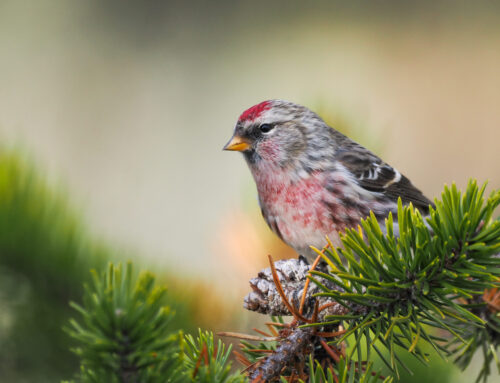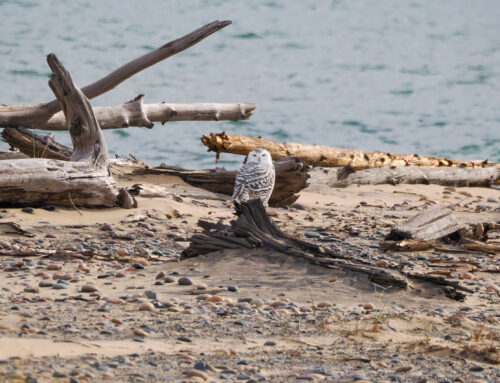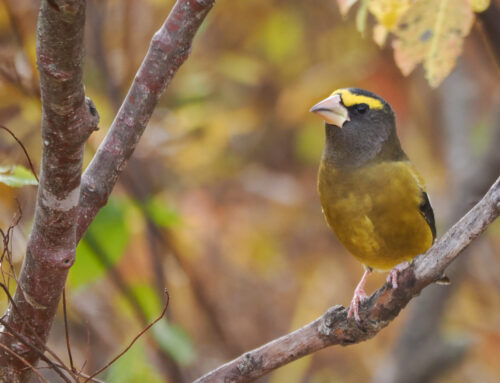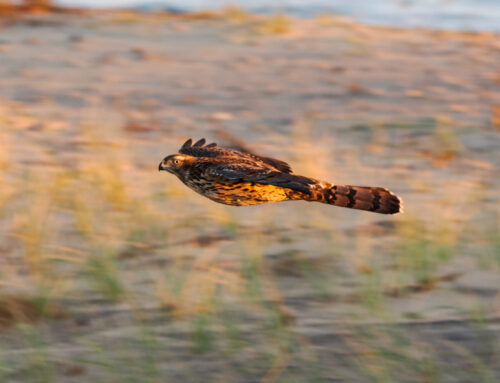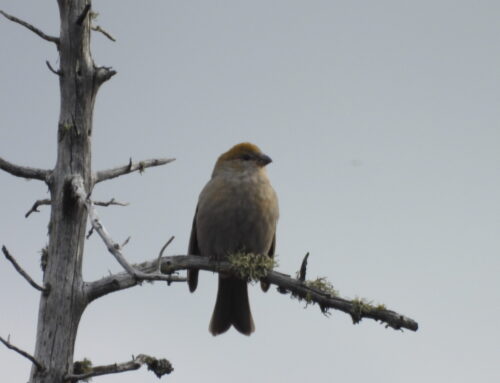For the past two weeks, Whitefish Point has been virtually ploverless. On August 5, a fledgling from Vermilion stopped by for a brief rest and has not returned since.
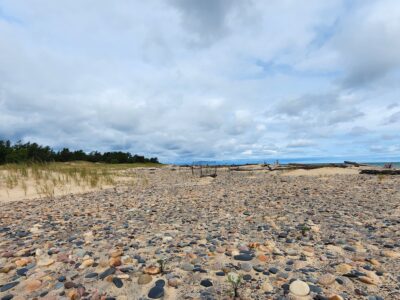
The exclosure at the Point. Photo by Stephanie Owens
Sunday struck a nostalgic chord as I ventured to the beach to clean up what was left of the season.
As I snipped off the thick zip ties holding the wire exclosure to the anchoring corner stakes, it felt as though I was performing an autopsy of my summer. It’s hard to wrap my mind around how long 14 weeks should feel like. It honestly felt like a very long time to me, but one in which I was grateful for every moment.
It’s joyful to recollect how the season started, with hope and exploration of what would come to be my workspace for the next three months. Then, there was the day I discovered the nest with two eggs in it, which led to three and finally four. The next 26 days proceeded painstakingly slow and subtle. I came to trust Little Bill Bob and Vie’s incubation ethics, holding out for the day the chicks would show. Then arrived that momentous day, which intensified my already present mother-bear instincts. I was filled with such excitement observing the three tiny hatchlings, which turned to worry once I discovered Hop’s impairment. A brief period of grief occurred after I found Hop’s body and the absence of another chick. I spent the next two weeks feeling like I was walking on paper-thin ice, like my world could shatter at any moment. Every day that I saw Baby, I celebrated to myself — a chick was going to fledge at the Point. Over time, Vie distanced herself from Bob and the chick, eventually leaving them to migrate south. I grew confident in Baby’s survival skills, no longer beginning my days on the beach biting my fingernails. Soon enough, Baby was graduating to the air, rendering me an empty nester.
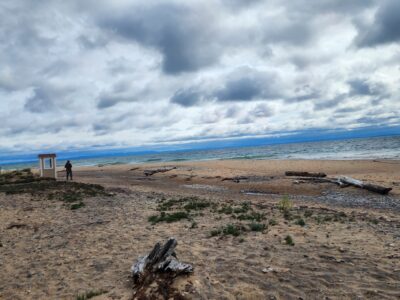
The shore in front of the boardwalk entrance. Photo by Stephanie Owens
It was a bit jarring looking around the shore without the exclosed areas, now open for anyone to walk through. The beach was being settled by a series of makeshift driftwood tents. Usually, I would begin to dismantle these behemoths, as the tall logs could serve as a perch for predators. Now, I can take a deep breath and ignore their presence.
I said my goodbyes and went home in anticipation of the next summer.
~ Stephanie Owens
2024 Piping Plover Monitor
Featured photo: A fledgling from Vermilion that dropped by briefly. Photo by Stephanie Owens
Piping Plover monitoring is a collaborative effort between Michigan Audubon and Seney National Wildlife Refuge (USFWS).
You can keep up with the 2024 Piping Plover action at WPBO by reading Stephanie’s blog posts and following WPBO’s social media (Facebook, Instagram, and X).
Stephanie Owens: 2024 Piping Plover Monitor
 Stephanie is a native Yooper and a recent graduate of Lake Superior State University. She earned a Bachelor of Science in Conservation Biology and completed her senior thesis on the distribution of per- and polyfluoroalkyl substances in waterways in Eastern Upper Peninsula. Previously, she worked as a Piping Plover monitor in the U.P. for two seasons and conducted Black Tern and habitat surveys during that time as well.
Stephanie is a native Yooper and a recent graduate of Lake Superior State University. She earned a Bachelor of Science in Conservation Biology and completed her senior thesis on the distribution of per- and polyfluoroalkyl substances in waterways in Eastern Upper Peninsula. Previously, she worked as a Piping Plover monitor in the U.P. for two seasons and conducted Black Tern and habitat surveys during that time as well.


